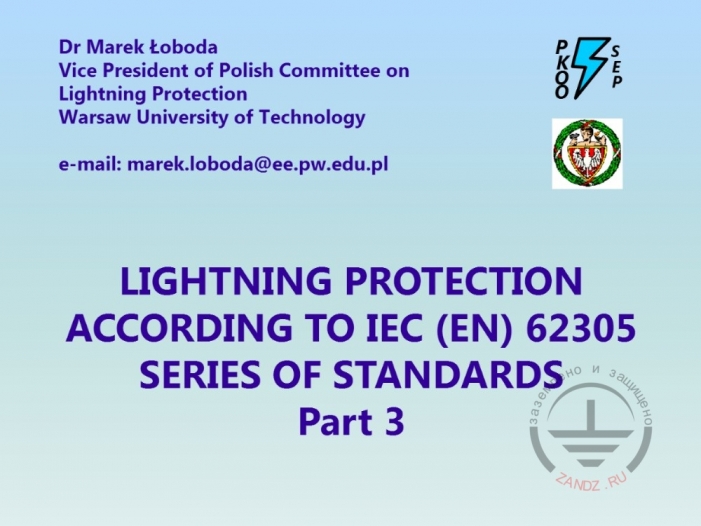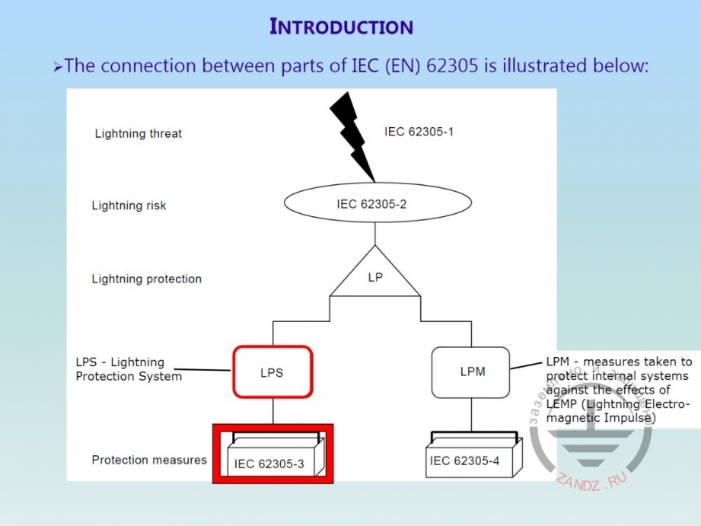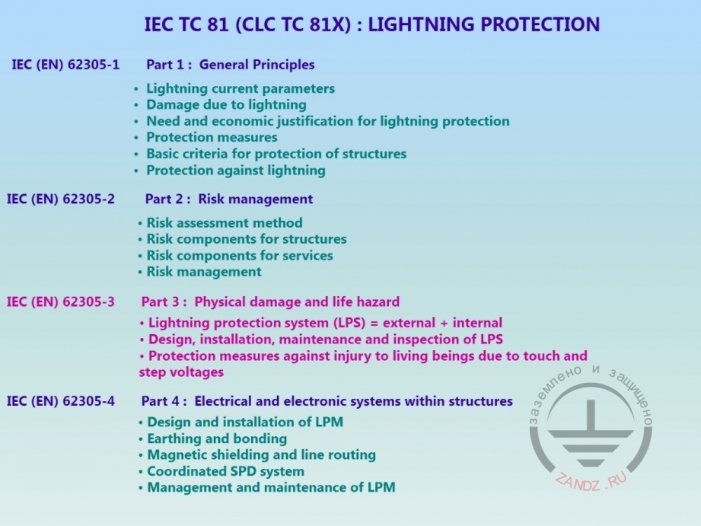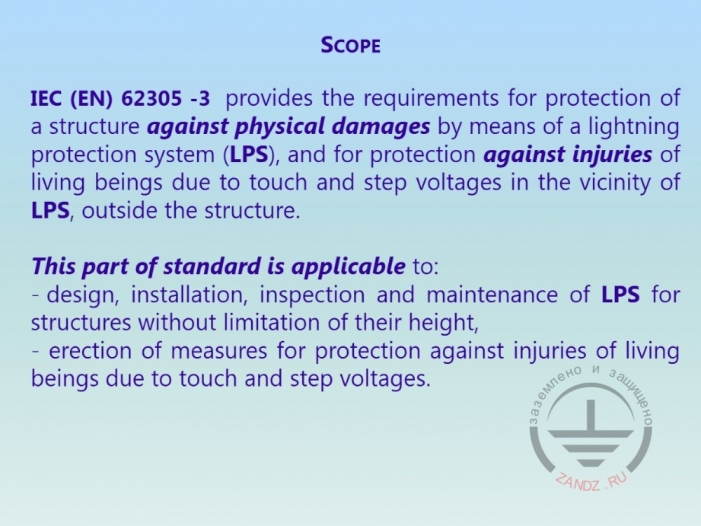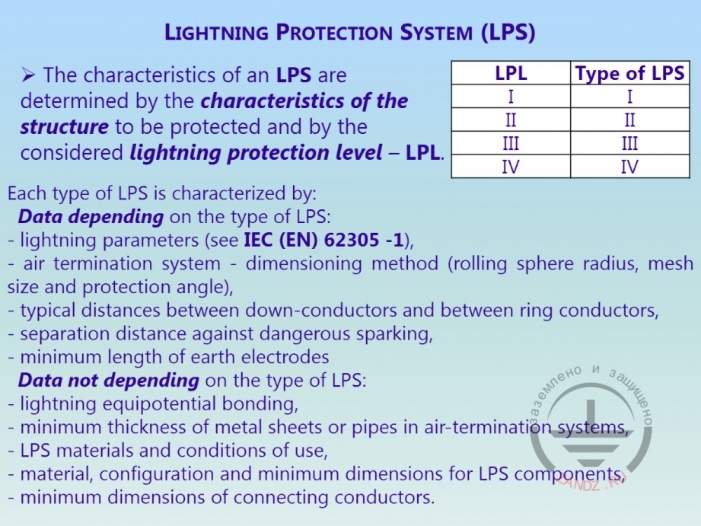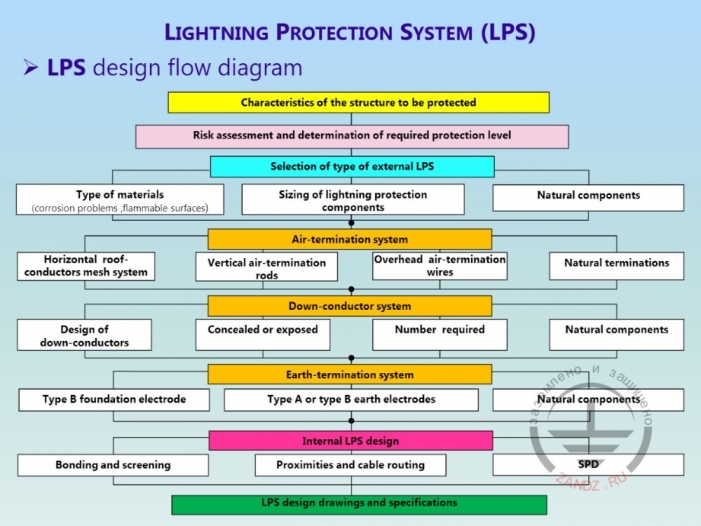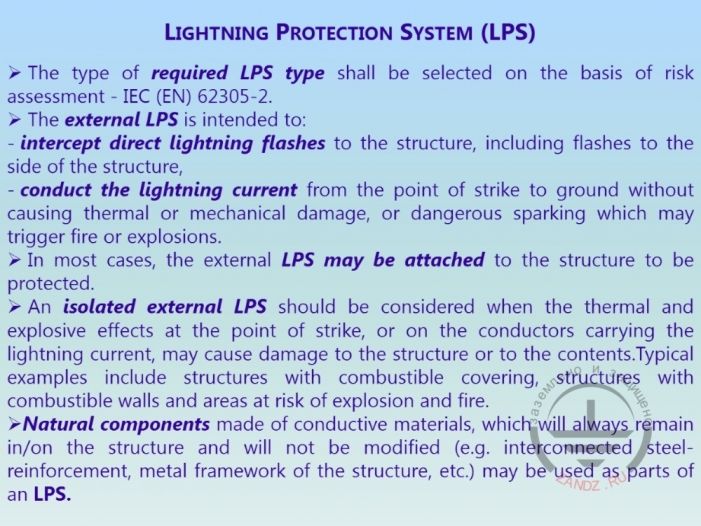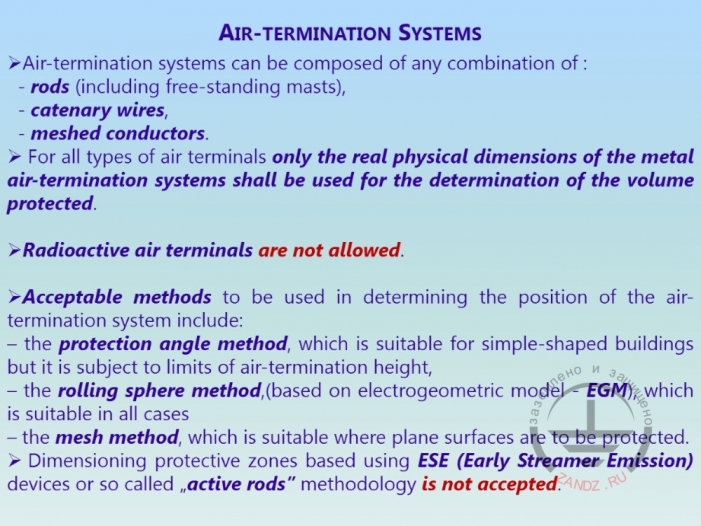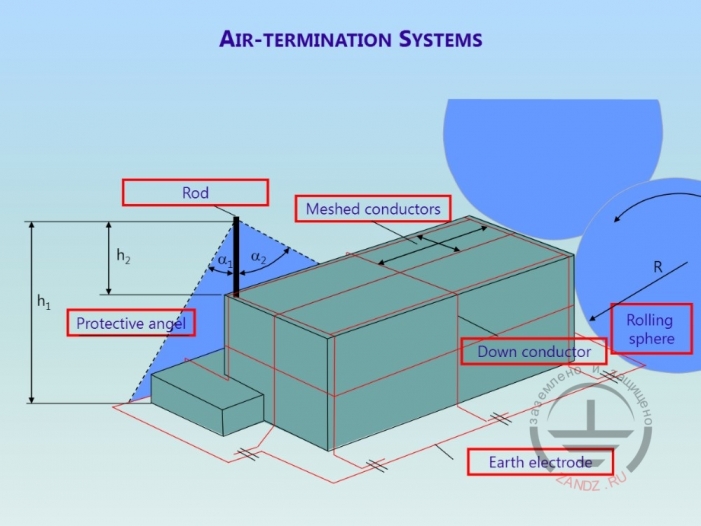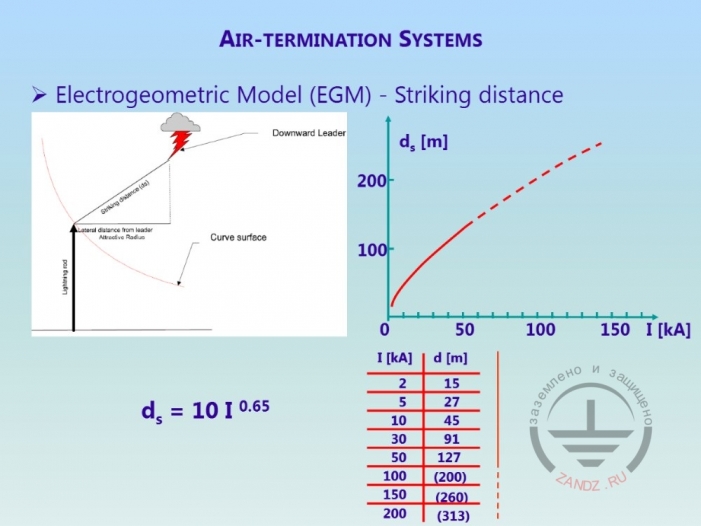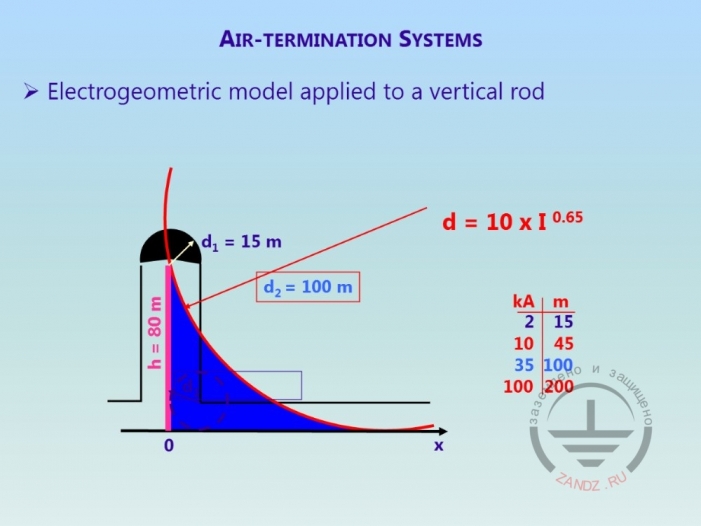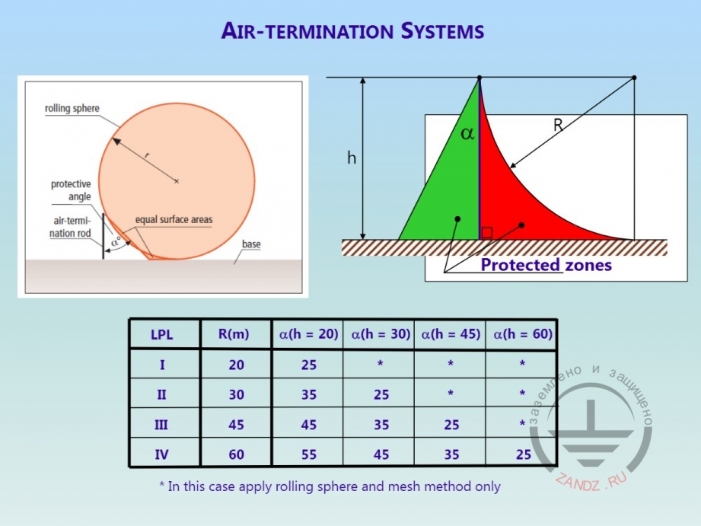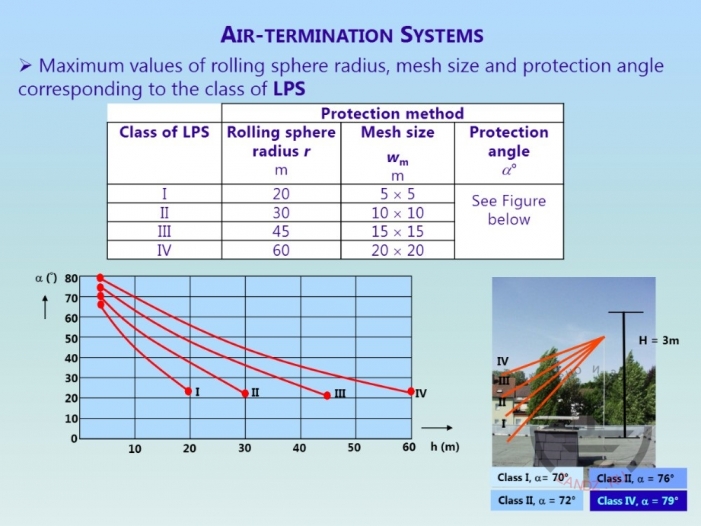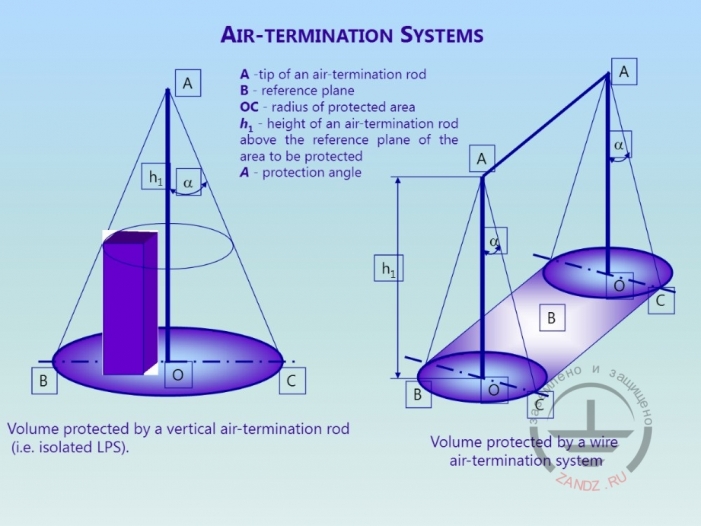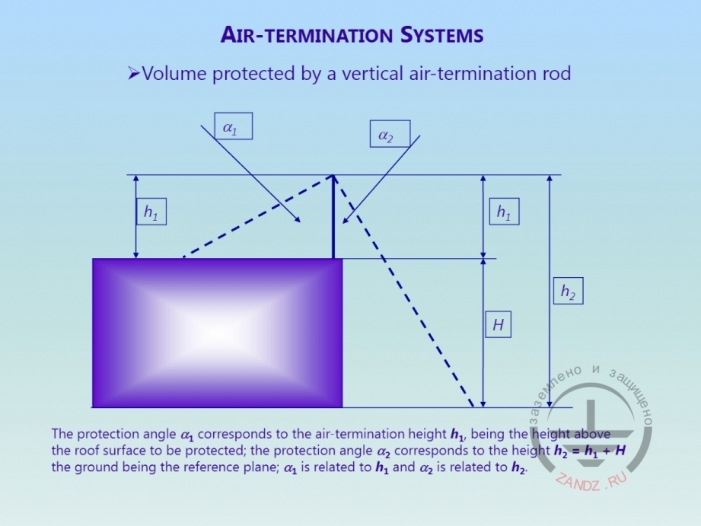The third webinar of a series "Grounding and lightning protection: IEC 62305 standard"
(was held on April8, 2015 at 11:00 Moscow time)
We recommend watching with the quality of "1080p" in a full-screen mode.
This standard specifies the requirements for the protection of buildings against physical damage by installing a lightning protection system (hereinafter referred to as LPS) and against electric shock to persons due the touch and step voltage near LPS.
The purpose of the webinar is to discuss complex issues in the design, installation, testing and maintenance of LPS for structures without limitation of their height, as well as protection measures against electric shock to persons due to the touch and step voltage.
During the webinar, we will study important features that should be considered when designing the entire lightning protection system and each component: lightning rods, down conductors, surge protection devices and grounding devices.
What should be considered in the process of lightning protection design, what kinds of air terminals can be used and what is prohibitted for use. You will get answers to these questions at the webinar with Dr. Marek Loboda (Poland)
on Wednesday, April 8, 2015.
Webinar text. Page 1
Quick navigation through slides:
Page 1:
1. International electro technical standard IEC 62305 Part 3
2. Configuration of IEC standards
3. Main standard series
4. Risk calculation
5. Classification of lightning protection systems (LPS)
6. Diagram of the process of lightning protection design
7. Design of lightning protection systems LPS
8. Description of lightning rod system
9. Image of the possible lightning protection system
10. Geometric model of rolling sphere radius
11. Chart of protection zone dependence
12. Dependence of rolling sphere radius on the building’s height
13. Data chart of various protection methods
14. Example of conical-shaped protection
15. Parameters of protection zone
16. Examples of rolling sphere use
17. Example of mesh method use
18. Funny devices used in different countries
19. Classification and result of lightning strikes
20. Types of natural lightning rods
21. Table of sizes for natural lightning rods
22. Lightning rod geometry
23. Insulated lightning protection system
24. Non-insulated lightning protection systems
25. Calculation of distance between lightning rods
26. Grounding of lightning protection system
27. Types of electronic devices
28. A type of electronic device
29. B type of electronic device
30. Installation of ground electrodes
31. Table of materials for lightning protection
32. Internal lightning protection systems
33. Equipotential bonding systems
34. Grounding system scheme
35. Example of a system with a dead-earthed neutral
36. Example of circular grounding network
37. Calculation formula of a safe zone
38. Table of Ki coefficient values
39. Table of Kc coefficient values
40. Detailed calculation of Kc coefficients
41. Image of lightning current distribution
42. Touch voltage
43. Step voltage
44. Lightning protection systems maintenance
45. Table of lightning protection maintenance
46. Questions and answers
Estimated reading time: 15 minutes
— Good afternoon, dear colleagues! We are happy to greet you at the next webinar on the design of lightning protection and our topic today is "International electrical technical standard IEC 62305" part three - it is protection of structure and human from physical damage of lightning. Our irreplaceable lecturer - Dr. Marek Loboda from Poland will make the report today. Dr. Marek Loboda is the author of over 150 publications on "Lightning protection". He is a member of the Commission on development of IEC 62305, and it means we can address our questions regarding the design and calculation of lightning protection or questions about IEC standard directly to the expert in this field. My name is Alexey Korytko, I am an administrator of this webinar. And first of all, a few words about the order of our event, how it will be held. The webinar is 90 minutes and consists of 4 blocks and pauses between them. The pauses are to answer your questions. You can send your questions to the lecturer or questions on how to adjust sound in the chat on the bottom left of the screen. The webinar will be held in English with simultaneous interpretation. To hear everything well, you need to adjust the level of volume of the hosts. When the interpreter turns the mic on, you can point at the icon on the left and you will see a volume regulator.
— On the slide in the central part of the screen, you can see how to adjust it. We recommend you to set the interpreter's volume level to maximum - 80 or 100 to hear Russian speach well, and the level of Marek's volume - to 50 or lower. You can do it in real time mode to hear everybody well. If you have any questions on connection, adjustment of sound, you can send them to the chat and I will answer them. If there are no questions, we can start the main part. Marek, I give you the floor.
IEC 62305. Part 3
— Thank you very much, Alexey. I am delighted to have the opportunity to present information on lightning protection again. Thank you Alexey for presenting me. I am delighted to participate in the standardization of lightning protection and share this information with you.
Configuration of IEC standards
— Today we will work on the third part. We will talk about protective measures, which mostly relate to external lightning protection. And here you see correlations between the series of lightning protection standards 62305 in this chart. Let's start with the first part. There is a plan to work on the fourth part, which will be presented at our next webinar. It will refer to protective measures on electronic, electric systems in the buildings.
Main series of the standard
— Here you see the main topics which we will discuss today. Today our attention will be directed at the physical damage and life threat, which lightning strike can bring.
Risk calculation
— The third part of the standards - general view on this part shows us the requirements on the protection of buildings from physical damages and protection from injuries of human and living beings, which they can get due to step and touch voltage near lightning protection systems outside the building. Of course people can be subject to lightning strike inside the buildings themselves.
Classification of lightning protection systems (LPS)
— We need to remember, that in accordance with the standards, there are various classifications of lightning protection systems, which depend on the characteristics of buildings and are under lightning protection. The level of lightning protection is also connected with lightning current parameters, and also the project and the size of the building. It is necessary to define the sizes, determine the distance between lightning rods ad circular conductors. It is also required to keep in mind the separation distance to prevent dangerous glimmering. It is very important for buildings which contain flammable or explosive substances, and also requirements on the minimal length of ground electrodes. There is also information, which doesn't depend on lightning protection systems. This is the problem with lightning strike potential equalization with the minimal thickness of metal slabs and elements of lightning rod systems, materials and conditions in which they are used and also minimal sizes of lightning protection components, which connect individual elements contained in these systems.
Diagram of the process of lightning protection system design
— On this slide we see the diagram of the process of lightning protection system design. Usually everything starts with the characteristics of the protected building. Of course, we need to understand what is this building? What does it consist of? What is it made of: wood, brick or concrete? Where is it located? What are its sizes? What is its structure type? What systems will be inside? And on the electronic, electric equipment inside it. Before designing lightning protection system, it is necessary to collect a lot of information. The next step - determination of lightning strike risk. Heat risk, necessary protection level which should be defined for each building. If we are talking about lightning protection, we of course mean external systems - lightning rods, lightning arresters and grounding systems. There are different possibilities of these parameters choice: type of material, determination of protective component parameters, and also use of natural components. In fact the use of natural components is very welcome - these are metal elements of building construction, they can help in lightning protection systems. And finally, design of internal lightning protection system.
LPS system design
— If we talk about lightning protection systems, we need to remember what the main aim of external lightning protection systems is. Of course, it is interception of direct lightning strikes which get into the building. If the building is high, then there can be flashes hitting near the building, this should be considered. And also drainage of lightning current from the strike point to the ground without a danger of heat or mechanical damages, and also dangerous sparks, which may bring to fire or explosion, or maybe there are flammable or explosive substances in the building. In means, external lightning protection systems must be connected to the building. It means, that lightning rod and lightning arresters system can be located on the building but there exist insulated external lightning protection systems, which are studied when there can be thermal, heat effects of a possible explosion. It may bring to the damage of buildings or their content. Usually these buildings are covered with flammable coatings with flammable walls or substances which may bring to an explosion. It is recommended to use natural components in these standards, which are made of conducting materials. Usually they are located in the buildings or on the buildings and they can't be changed. These are reinforced concrete fittings, metal structures and so on. They should be used as parts of lightning protection systems and are called natural components.
Description of lightning rod system
— Now I'd like to start with the description of lightning rod system. Usually they consist of lightning rods, include free-standing masts of lightning arresters, catenary wires and meshed conductors or celled conductors. These are general types of lightning rod systems. It is very important, that real physical sizes of metal systems of lightning rods must be used to define the spatial volume to be protected from lightning strikes. Many years ago, radioactive lightning rods were used in many countries of the world. It was thought that their efficiency was higher, but now their use is forbidden. There are still more than hundred thousand radioactive lightning rods all over the world. It is quite a big problem what to do with them, but it is prohibited to use them. Today there are three safe methods to define lightning rods location - protection angle method; it usually fits for buildings of a simple shape and small size. The second is rolling sphere radius, the most recommended method based on the electrical geometrical model and is suitable for all cases. I want to say a few more words about this model. Maybe this information will be interesting for you.
Possible lightning protection system image
— You see possible sizes and possible installations of protective measures of lightning rod systems on this image. It is a mesh conductor; it is a rolling sphere and protection angle. Of course, I would like to bring your kind attention to the values between the protection angle and towards a lightning rod and surface. The height of the lightning rod is important here, it should correspond to the square of roof surface, flat roof of the building.
Geometric model of the rolling sphere method
— Here you see the recommended data of rolling sphere method, which are based on electric geometric model. It was intended, was developed by many professors, in particular a professor from Krakow and from many universities, I know them personally and they developed thee recommended regulations. Well, the system of lightning protection includes protection from a downward lightning strike or lightning "leader» that is from cloud to the ground. If we analyze this phenomenon, we will see, that there is a distance of a possible strike on a certain level above the ground; it is orientation of the downward strike to the place where lightning will hit or object which is located on the ground surface. It is a distance of a possible strike and it strictly depends on the values of lightning parameters.
Chart of protection zone dependence
— The strike distance refers to the rolling sphere radius, which can be in any place depending on the height of the lightning rod. The zone under protection is shown in blue color. Such a space will be under protection.
Dependence of a rolling sphere radius on the building height
— That is why, different lightning protection level types, mainly depend on the rolling sphere radius and on the building height. Here you see the number of meters of the building height 20, 30, 45, 60. And on the protection angle. On this picture, we see the comparison of square of equal surfaces, protection angle method, lightning rod and rolling sphere method use. Usually we see that the surfaces are almost equal. The surface of the zone, which should be protected, depends on the protection level and angle and building height. In green we see the unprotected zone, which appears if we use right angle protection method. And in red - it is what is protected by rolling sphere method. In fact, rolling sphere method is quite conservative in comparison to protection angle method. But there is an agreement between the experts in accordance with the European standards, that all these standards may be examined.
Data table of different protection methods
— Here there is a table, which shows data at the use of different protection methods. The first column is lightning protection system class. The second - rolling sphere radius in meters. The third - size of mesh in meters and the fourth column is protection angle. Here there is an example of the use of a 3-meter-high lightning rod. If our lightning rod is 3 meters high, you will see different efficiencies of using different classes of lightning protection systems. And below under the picture, it is written what protection level will be for each class.
Examples of cone-shaped protection
— And on the examples, on the left picture you see a cone-shaped protection, in the middle there is a lightning rod and the sizes of the building under protection, we see that it is straight in the protection cone. Here we only see twist-and-steer wires on the second picture and divided lightning protection systems.
Lightning protection zones parameters
— When we have a possibility to create lightning rods or connect different lightning protection standards, using protection angle, we get new opportunities.
Next Page >>
slides 16 to 30
Useful materials for designers:
Related Articles:
 External lightning protection. Elements.
External lightning protection. Elements.
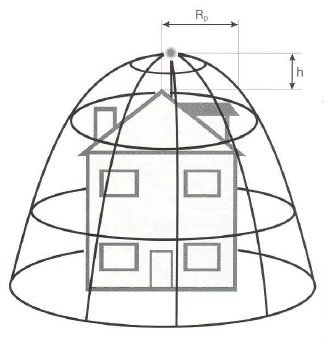 GALACTIVE active lightning rod
GALACTIVE active lightning rod
 6. How to do that?
6. How to do that?


